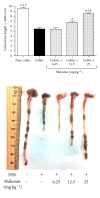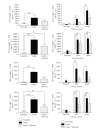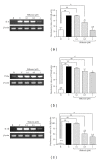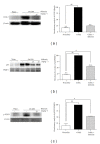Beneficial effect of shikonin on experimental colitis induced by dextran sulfate sodium in BALB/c mice
- PMID: 23346196
- PMCID: PMC3549420
- DOI: 10.1155/2012/271606
Beneficial effect of shikonin on experimental colitis induced by dextran sulfate sodium in BALB/c mice
Abstract
The naphthoquinone shikonin, a major component of the root of Lithospermum erythrorhizon, now is studied as an anti-inflammatory agent in the treatment of ulcerative colitis (UC). Acute UC was induced in Balb/C mice by oral administration of 5% dextran sodium sulfate (DSS). The disease activity index was evaluated, and a histologic study was carried out. Orally administered shikonin reduces induced UC in a dose-dependent manner, preventing the shortening of the colorectum and decreasing weight loss by 5% while improving the appearance of feces and preventing bloody stools. The disease activity index score was much lower in shikonin-treated mice than in the colitic group, as well as the myeloperoxidase activity. The expression of cyclooxygenase-2 was reduced by 75%, activation of NF-κB was reduced by 44%, and that of pSTAT-3 by 47%, as well as TNF-α, IL-1β, and IL-6 production. Similar results were obtained in primary macrophages culture. This is the first report of shikonin's ability to attenuate acute UC induced by DSS. Shikonin acts by blocking the activation of two major targets: NF-κB and STAT-3, and thus constitutes a promising potential therapeutic agent for the management of the inflammatory bowel disease.
Figures










References
-
- Kornbluth A, Sachar DB. Ulcerative colitis practice guidelines in adults: American college of gastroenterology, practice parameters committee. American Journal of Gastroenterology. 2010;105(3):501–523. - PubMed
-
- Stange EF, Travis SPL, Vermeire S, et al. European evidence-based Consensus on the diagnosis and management of ulcerative colitis: definitions and diagnosis. Journal of Crohn’s and Colitis. 2008;2(1):1–23. - PubMed
-
- Ghosh S, Mitchell R. Impact of inflammatory bowel disease on quality of life: results of the European Federation of Crohn’s and Ulcerative Colitis Associations (EFCCA) patient survey. Journal of Crohn’s and Colitis. 2007;1(1):10–20. - PubMed
-
- Bonen DK, Cho JH. The genetics of inflammatory bowel disease. Gastroenterology. 2003;124(2):521–536. - PubMed
LinkOut - more resources
Full Text Sources
Other Literature Sources
Research Materials
Miscellaneous

